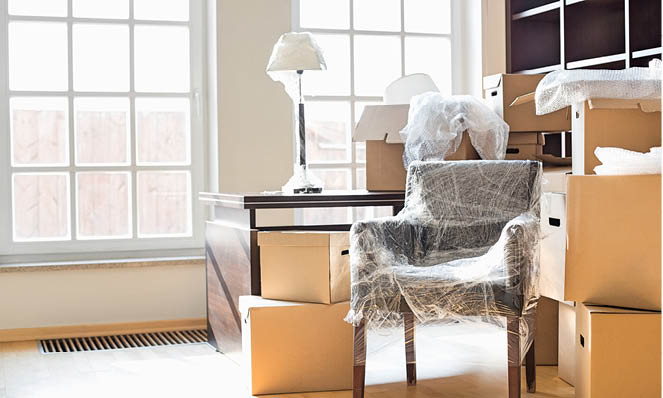Many of us could benefit from getting rid of things we don’t need and organizing the things we do — especially those who are planning for moving day. If that’s you, follow these steps, which take you from square one all the way to unpacking in your new home.
#1: Create an inventory list.
The first step to getting organized is to inventory your belongings. Go through your home, room by room, noting which items you will take with you, and which items you need to get rid of.
#2: Discard and donate.
Once you have an idea of what to keep and what you can live without, it’s time to sort out and bag up the items you need to discard and the ones you want to donate. Many organizations are happy to accept donated items. Some will even pick up the items from your home.
#3: List your remaining belongings from least to most essential.
Save this, and the remaining steps, for when your move is imminent and you’re ready to start packing. Your least essential belongings should be items you won’t need until after the move, including out-of-season clothes and decorations. Also, books and seldom-used items in your closets and cabinets might qualify as less-essential items.
#4: Take photos of your electronics.
Before it’s time to take your electronics apart, take photos of where are the cords are plugged in. This will be a great help when it’s time to set your electronics up in your new home.
#5: When packing, start with your least essential belongings.
You can begin packing your least essential belongings several weeks to a few months before your move. Having less left to pack as your move nears will alleviate a lot of stress. Some general tips for packing are:
- Group items by the room they will go in.
- Keep all parts or pairs of things together.
- Small hardware items, such as screws, should be placed in plastic bags and taped or tied securely to the article to which they belong.
- Use smaller boxes for heavier items, such books, so they’re not too heavy to carry.
- Use bigger boxes for lighter items, such as bedding.
- Pack small, fragile items separately in small boxes, cushioning with crushed packing paper. Place small boxes in a single large box, filling in spaces with crushed paper.
- Label your boxes as you go. Indicate both the contents of the box and the room they will go in.
#6: Continue packing until you get to your most essential items.
When you get to your essentials, pack them in your luggage and in clear plastic bins so the items will remain easily accessible. Some essentials you may want handy include:
- Essential paperwork
- Driver's license
- Electronics
- Chargers
- A change of clothes
- Toiletries
- Toilet paper
- Towels
- A basic set of tools
- Most-used kitchen utensils
Pack these items last, and make sure they don’t end up on a moving truck.
#7: Keep hangers in a readily-available box.
Make sure you have hangers available until the day you move, and before you start unpacking clothes in your new house.
#8: Pack your cleaning supplies in an accessible bin.
You’ll want to clean your old place after moving out and clean your new house before moving in. Be sure to have cleaning supplies ready to go in both locations.
#9: Unpack from most to least essential.
Using your least-to-most-essential packing list, unpack, working backwards from your most essential items. Make your bed on your first day in your new home, so you can get some sleep after the long day of moving. Unpack toiletries, towels, and the clothes you packed for the first few days.
After unpacking the essentials, move on to the kitchen, so you’ll be able to start cooking (or at least have some utensils to eat takeout after a long day of moving into your new home).
Ready to get started on your next move? Find a local home loan expert in your area to chat about your home financing options.





